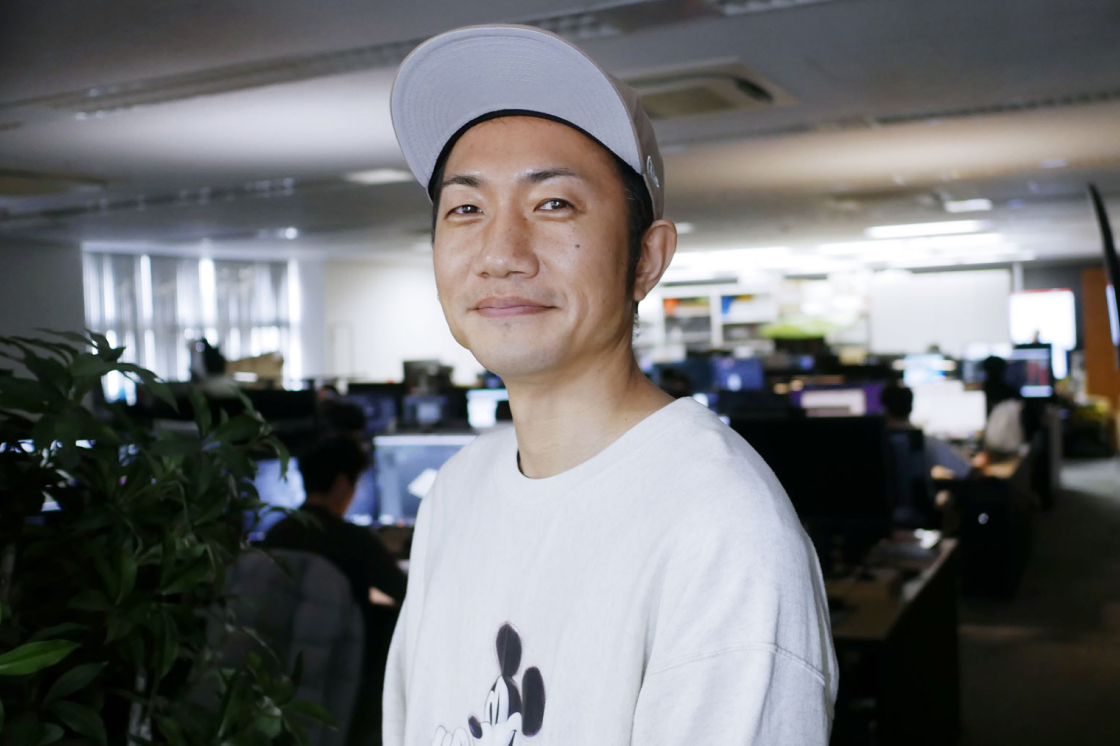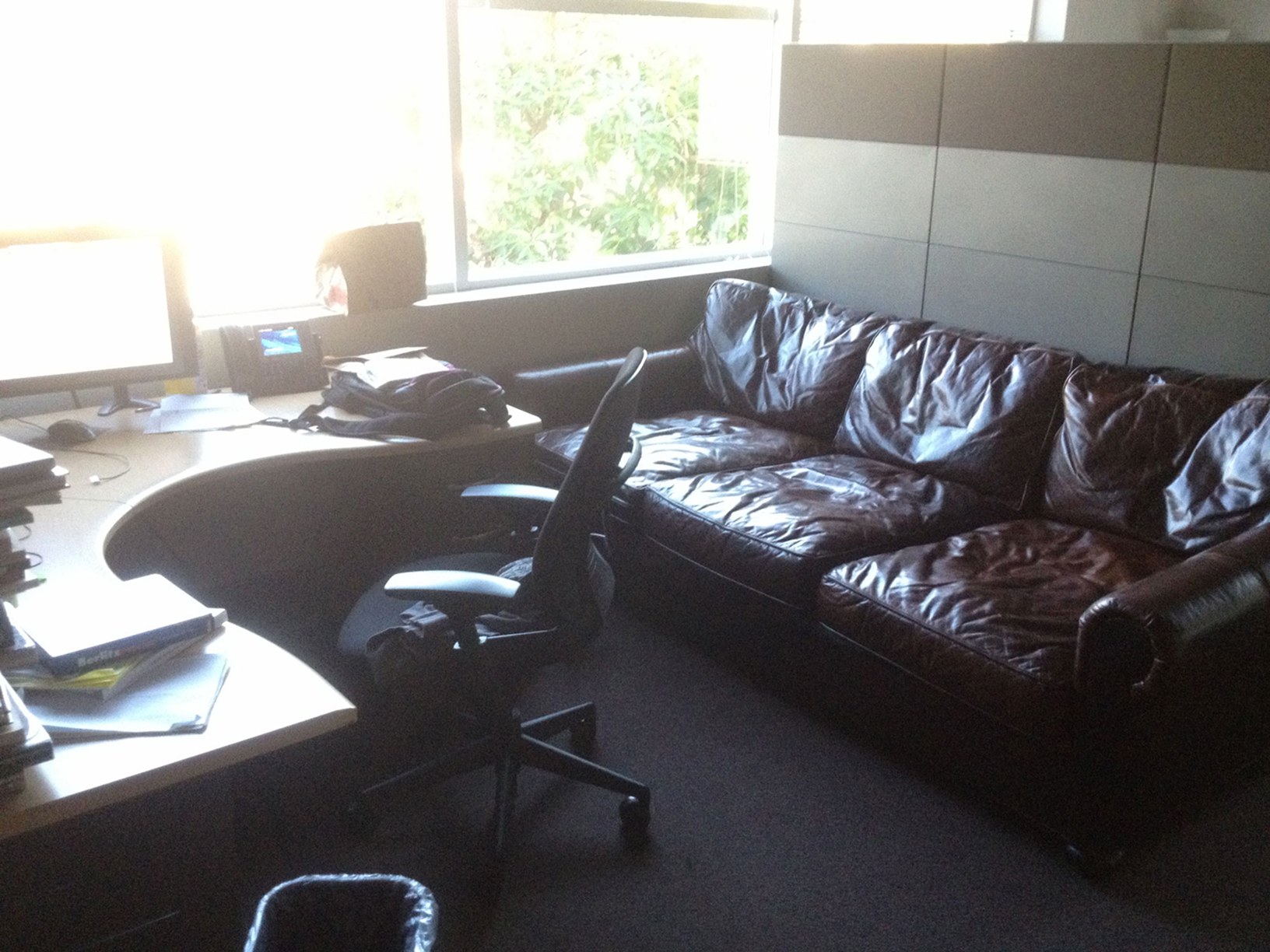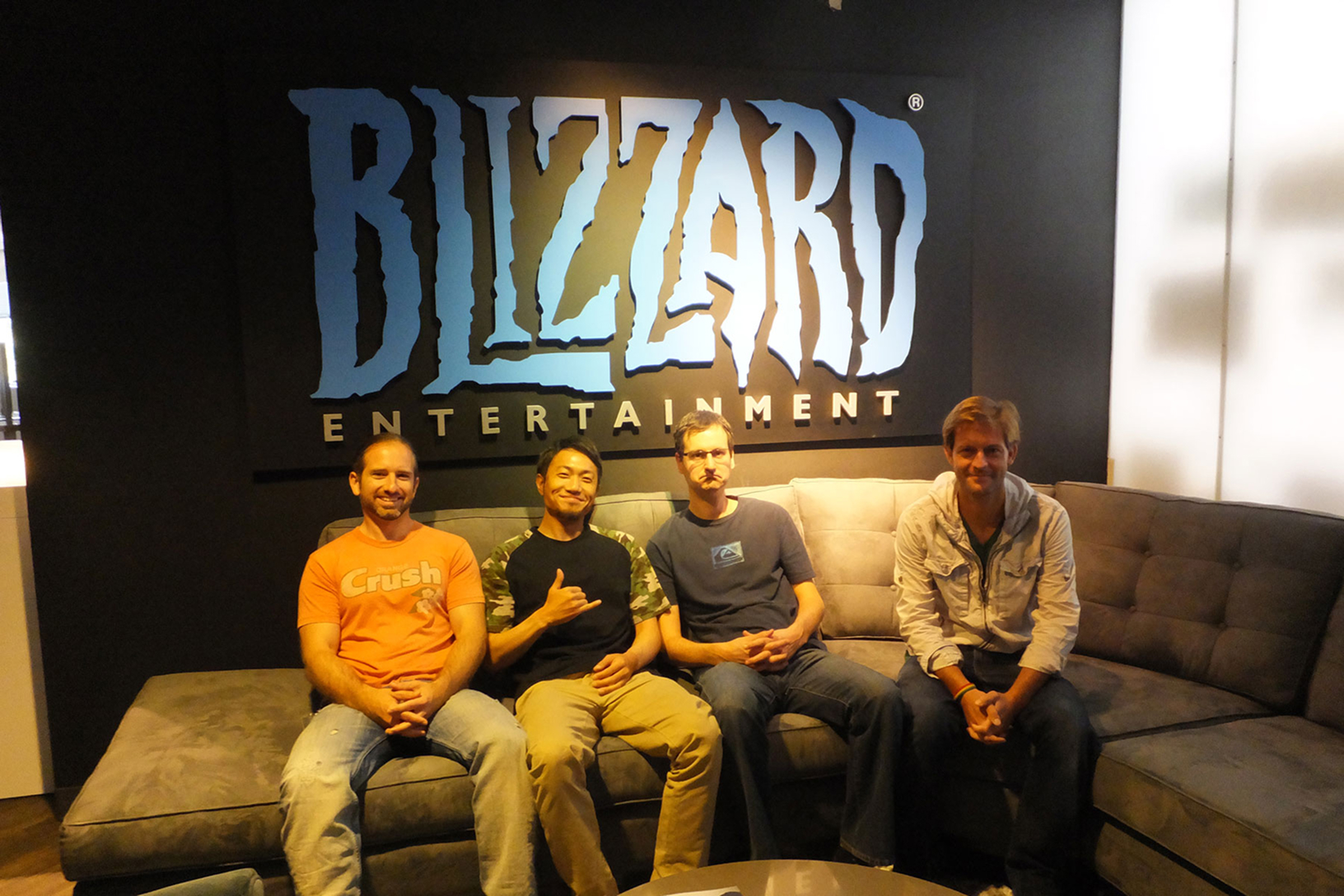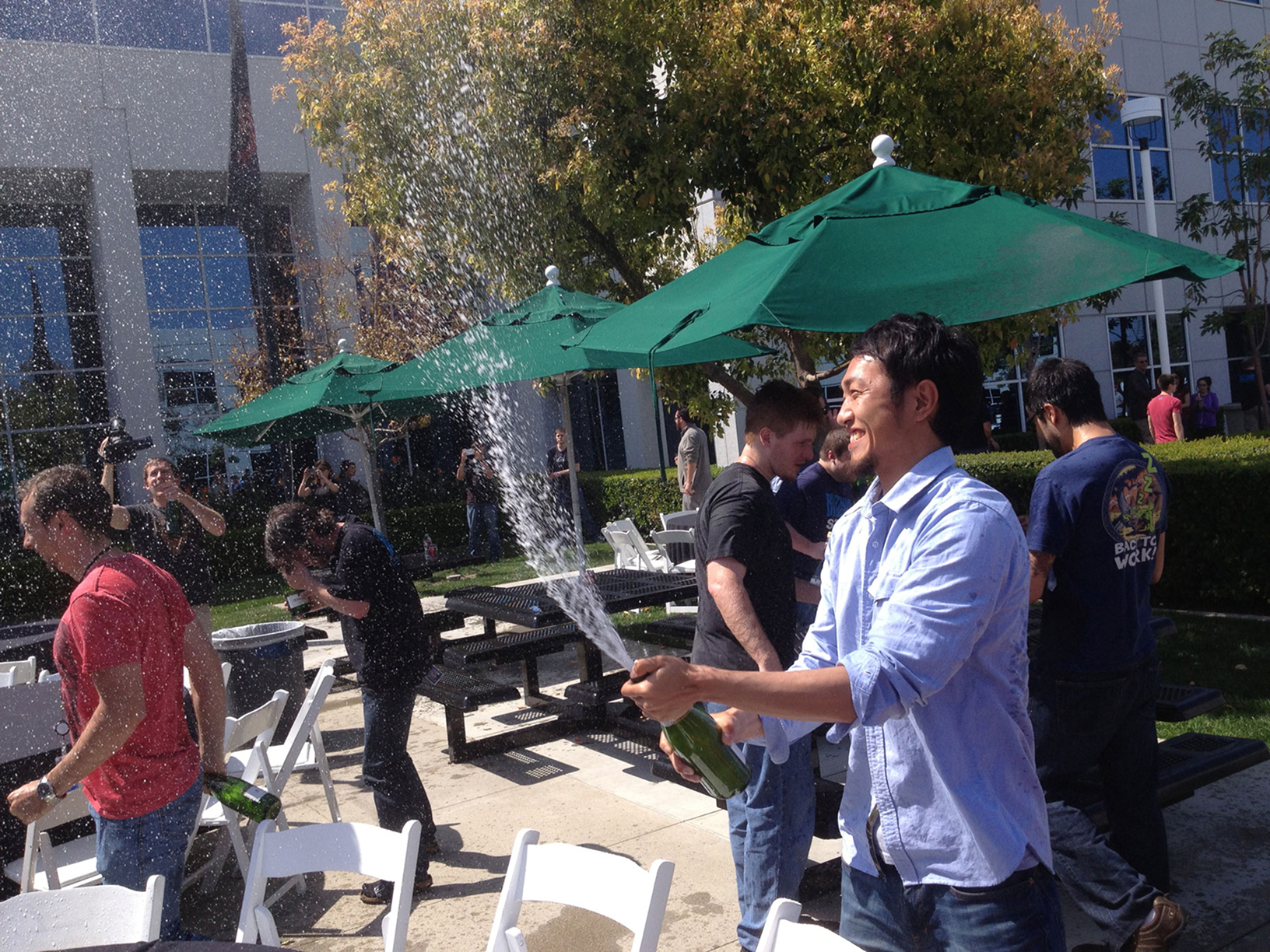
From Super Mario Fan to Global Background Art Master: A Creative Journey
Director/Environment Modeling SupervisorTakuya Suzuki
Takuya Suzuki built his impressive portfolio working on legendary titles like Square Enix's "Final Fantasy" series and Blizzard Entertainment's "World of Warcraft" and "Diablo III." His rise to global recognition as an environment artist was shaped by mentors who championed his international ambitions and prioritized his growth. We sat down with Suzuki-san to explore his journey from aspiring artist to his current role as director at SAFEHOUSE.
Hi! Can you introduce yourself?
My name is Takuya Suzuki, and I am a modeling supervisor at SAFEHOUSE. I was born and raised in Saitama, Japan. During my first year at the Tokyo University of Technology's School of Media Studies, I had the privilege of taking classes from Mitsuru Kaneko, the professor behind “Total Recall (1990),” which won an Academy Award for Special Achievement. He is also referred to as the “father of CG in Japan” and founded Japan's first CG production company, JCGL.
I had a strong desire to work overseas, so I chose this school, hoping that studying under him would bring me closer to that goal. One day the school had a presentation and one of the alumni who I knew attended it. He was working at Square Enix at that time. After the presentation, he approached me, we talked for a bit, which led to an interview process. Ultimately, I joined Square Enix after graduating. At that time, the production department wasn’t hiring new graduates, and since I didn’t have prior work experience, I was offered a part-time position (lol).
Were you always interested in video games?
I have an older brother who's six years older than me, so I naturally gravitated toward the games he played. I was in the first grade when “Super Mario World” came out for the Super Nintendo Entertainment System (SNES), and I was completely blown away. The game had both a close and distant view, and when Mario ran, the background shifted in a parallax effect. Compared to the 8-bit graphics of the original Nintendo system, it felt much more three-dimensional and lifelike, and even at a young age, I was really impressed (laughs).
The next game that truly captivated me was “Final Fantasy VIII.” The visuals were so realistic that it felt almost like watching a movie. I think it was during my first year of high school when I started to think, “I want to create games, too.”
I passed up an opportunity to work in America during my third year on the job. That moment became my turning point—I began seriously preparing for an international career.
Did you always want to work for Square Enix?
After graduation, I wanted to work abroad, but I couldn't find a job. Instead, I decided to join the most renowned game company in Japan. At that time, there was a department called Visual Works that focused on computer graphics, and I was hired there. One of the world-class modelers, Seth Thompson, had joined Square Enix from Blizzard Entertainment in the U.S. I was fortunate enough to be part of his team and worked on “Final Fantasy VII: Advent Children.”
Once the project was completed and Seth was preparing to leave Japan, he asked if I would like to join him. I went to Irvine, California, for an interview. However, at that time, modelers at Blizzard Entertainment were required to work on both environments and characters. I was 25 years old—young and confident, or perhaps had too big of an ego. So, I declined the offer, saying, “I don't want to create characters.” And so, I continued working at Square Enix for another three years.
Did you ever feel that working overseas was out of reach?
No, actually, that was when I started to take things seriously. I realized that if I put in a little more effort, I might be able to work overseas. I began studying English diligently and set my sights on opportunities abroad. Three or four years later, after finishing my work on “Final Fantasy XII,” I started thinking about finding a job overseas when Seth reached out to me again. He mentioned that Blizzard Entertainment's model team had split into separate character and environment teams, and if I was still interested, I could join them.
He said, “If you're still interested, why not come work for us?” However, up until that point, I had been focused on creating cutscenes for games, and my passion was really in Hollywood movies. I wanted to work in VFX, which combines live action with visual effects. So, I honestly told Mr. Taka, a producer at Blizzard Entertainment, that I was considering applying for a job at a Hollywood studio. He explained how challenging it could be for a Japanese person to obtain a work visa, and since he was Japanese, he understood the difficulties firsthand.
He suggested that I apply for a visa at Blizzard Entertainment and then move to Hollywood once I had my life in order. Essentially, he offered to secure a visa for both me and my wife, and on top of that, I could transition to another company once I was settled. I decided to come to the U.S. without hesitation.

Did you begin working in the U.S. immediately?
I applied for an O-1 visa, which is the type of visa that entertainers and athletes like Ichiro and Hideki Matsui had at that time. It took about a year to be approved, and by the time I received it, I was 29 years old. Initially, I thought I would work at Blizzard Entertainment for a while and then move to Hollywood right away, but after discussing things with some of the VFX artists there, that desire started to fade.
Blizzard Entertainment has a culture that values work-life balance and family time. This was one of the reasons why many VFX artists from Hollywood chose to leave and come to Blizzard, as the company offers a great family care system. I realized I still had a lot to learn, so I decided to settle down and continue my career at Blizzard Entertainment.

“To develop as an artist, the people you collaborate with matter more than the specific projects you take on.”
What did you learn from your experience at Blizzard Entertainment?
The most significant change for me is that I've started to think more about my own goals. Back in Japan, I mainly followed instructions, but since joining Blizzard Entertainment, I've become much more aware of my aspirations. In every meeting, I was asked, “What do you want to do?” I had to create everything with my own ideas in mind. It was quite challenging at first, but I believe I made substantial progress as an artist by learning to do that.
I've also started to prioritize “who I work with” over “what kind of work I do.” There are so many talented artists in the studio, which constantly inspires me and helps refine my taste. Plus, the top artists are always willing to share their knowledge and skills with me.
In Japan, I think there are many environments where you are told to “learn on the job” or “learn by watching what others do,” but at Blizzard everyone teaches you carefully and in detail, as if they were teaching a child. Not in a patronizing way, but theoretically. That's why everyone grows at a very fast pace. I feel that I was able to grow because those people were there, and that is why I wanted to teach in that way after I came back to Japan. Before I came to the U.S., I had assumed that I would grow if I got involved in big productions, but that has changed. The growth in my work would be insignificant if that was the case.

What were some of the key differences you noticed compared to your time in Japan?
The most significant difference is the opportunity to communicate directly with the art director. At Blizzard Entertainment, artists can have direct conversations with the art director, allowing for discussions about “how to think,” “what we want to achieve,” and “how to express those ideas.” I had the chance to engage with them, which helped me refine my sense of style.
In Japan, the approach was often more about receiving specific instructions like “please create this,” which meant there was less emphasis on the process of developing, presenting, and refining ideas into something better. While there are instances in Japan where individuals design on their own, I don’t often hear discussions about “why it will be cool” or “why it should be done that way.” On the other hand at Blizzard, there was a constant expectation for you to discuss your work and present your ideas. This fostered a constructive exchange of opinions and helped improve the quality of the work.
While there are certainly differences between companies in Japan and abroad, I found that this approach was particularly thorough at Blizzard Entertainment.
Another significant difference is that we worked in small groups of specialized talent. For example, there was a time when the three of us were each focused on three different projects.
How did you start working with Hiroaki Yura and SAFEHOUSE in general?
After five years at Blizzard Entertainment, I returned to Japan. Though I hadn't planned to stay long-term, family considerations led me to settle for about five years. Upon my return, I joined a CG production company as a modeling supervisor—the studio had been founded by a former colleague from my Square Enix days.
When that studio closed after roughly five years, Hiroaki Yura, SAFEHOUSE's president, approached me about collaborating. We had initially met during my time at Blizzard and had occasionally discussed potential ventures in Japan. Yura, with his background in video, game music, and sound production, was looking to leverage his U.S. experience to break into the Japanese video industry.
During this time, Yura introduced me to German art director Erasmus Brosdau. Seeing tremendous potential in Brosdau's expertise with Unreal Engine and real-time rendering, we made the decision to establish SAFEHOUSE together.
I was eager to share what I'd learned at Blizzard Entertainment—something that would have been challenging within a large corporate structure. My real ambition was to build a team from the ground up and develop our own productions. Yura understood this completely; having insight into Blizzard's operations, he shared my vision for what we could create together.
What kind of work do you do at SAFEHOUSE?
At SAFEHOUSE, I lead background modeling as a supervisor. My role bridges client consultations and team direction—I guide our collective design vision, make final aesthetic decisions for backgrounds, and balance quality against deadlines.
I deliberately assign projects based on both each artist's progress and their development needs, creating growth opportunities through targeted feedback. Beyond technical skills, I focus on teaching the deeper meaning behind background artistry, empowering everyone to develop directorial sensibilities.
Currently, I oversee about ten modelers—an unusually large team for a single supervisor. Traditional studios would typically have two or three leads between me and the junior artists. My approach is more like a teacher than a conventional supervisor. I'm still evolving professionally myself, so we've established systems to ensure I can effectively share new insights with each team member.